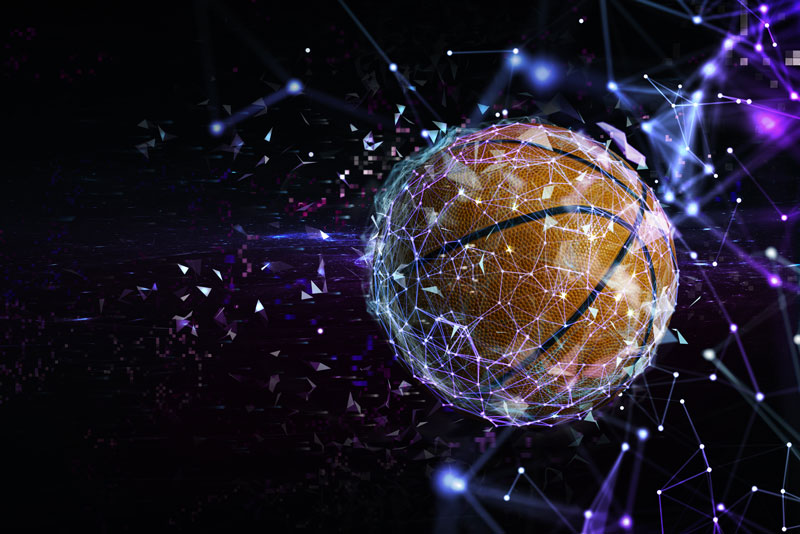With all its potential, it is hard to predict exactly what impact artificial intelligence (AI) will have on different industries. Initial fears that ChatGPT was coming for people’s jobs have eased, and in fact it has become a running joke to poke fun at the linguistic shortcomings of the technology. Amid the uncertainty, if there is one thing that is sure about AI, it’s that the tool is not going anywhere, and is likely to only grow in sophistication as time goes by.
One industry that must continually adjust alongside AI technology is education. There are varied elements of AI for colleges and universities to consider, from managing potential student use in class on tests or other assignments to the reality of preparing those students for a world in which AI is something they will have to work with. Here are some of the ways AI is being used in the world of education, both for better and for worse.
Inside the AI numbers
In July, the study platform Quizlet released its State of AI in Education Report, surveying 1,500 people in the United States. 1,000 respondents were students between the ages of 14 and 22, and 500 were high school or college teachers. 62% of the respondents reported using AI technologies, and about half of the student and teacher respondents said AI technologies have had a positive impact on the student learning experience.
Among the other findings:
- 73% of students agree that AI technologies help them better understand material
- 67% of students agree that AI technologies help them study faster or more efficiently
- Students’ top three AI use cases:
- Research (44%)
- Summarizing or synthesizing information (38%)
- Generating study guides or materials (33%)
According to the report, teachers are using AI to research, generate lesson plans, summarize or synthesize information, and generate classroom materials such as tests and assignments.

An AI disconnect
One point the report makes is that teachers and students at this point are using AI independently of one another. 53% of students said their teachers or instructors have not yet talked to them about how to properly use AI for education. 59% of teachers say they have yet to encourage their students to use it.
One of the biggest reasons for this is that the education industry as a whole is still trying to figure out how to approach the emerging technology. Only 22% of student and teacher respondents in the Quizlet report say their school has a code of conduct around AI technologies. Though the report provides a relatively small sample size, that seems to square with the world of higher education. After years of being a “what if” scenario for schools, the AI debate moved from an intangible to a reality very quickly with the arrival of ChatGPT during the 2022-2023 school year, and schools scrambled to figure out how to handle it.

Approaching AI
Some school districts blocked students from using ChatGPT shortly after the tool became available to the public. It quickly became clear that type of oversight would not be a viable solution moving forward, as it doesn’t prevent students from using the technology at home, and there is only so much control schools can exert over student technology use.
In colleges and universities, there has been a somewhat ironic turning back of the clock. To prevent students from using ChatGPT to aid in assessments, some instructors are going back to paper exams, rather than the digital tests that have become common. Other strategies require students to show an editing history or drafts that show their thought process. There is a technological solution, of course, but those who have used AI detectors say they are not yet reliable enough.
There will probably always be people who will try to take advantage of the technology, whether that is to write a paper or find an answer on a test. But AI’s advocates are focusing on how it can help both students and teachers. For students, it can be used to aid writing, helping to generate ideas or giving students who struggle with writing a starting point from which to move forward. Teachers say AI has helped them enhance their lessons. One example is that AI can provide real-world applications of math that students can relate to, unlike some possibly outdated references in textbooks. Another creative use has students using language skills to dissect a piece of writing and identify whether it was AI-generated.
The conversation in the coming months is certain to revolve around these best practices, and how to strike that balance between the positive and negative uses of AI. Some college administrators have recognized the benefits of AI for their own purposes, using it to generate general messages that are sent out to a wider school community at once. Used in the right context, AI can help make certain tasks easier and less time-consuming, just like any other business intelligence tool. Exactly which tasks it should be used for is the question colleges and universities need to answer.

- Analyzing the Challenges of Pharmaceutical Supply Shortages - April 26, 2024
- Summer is an Opportunity for Digital Transformation in Education - April 17, 2024
- Your Car is Tracking More than Miles per Hour - April 11, 2024



